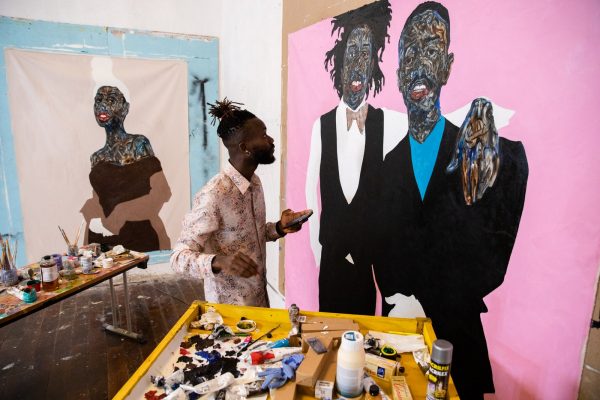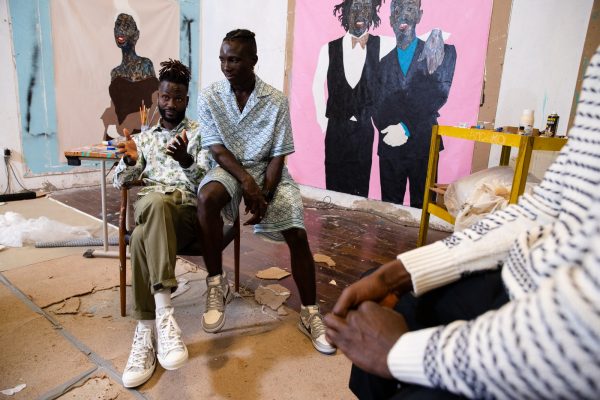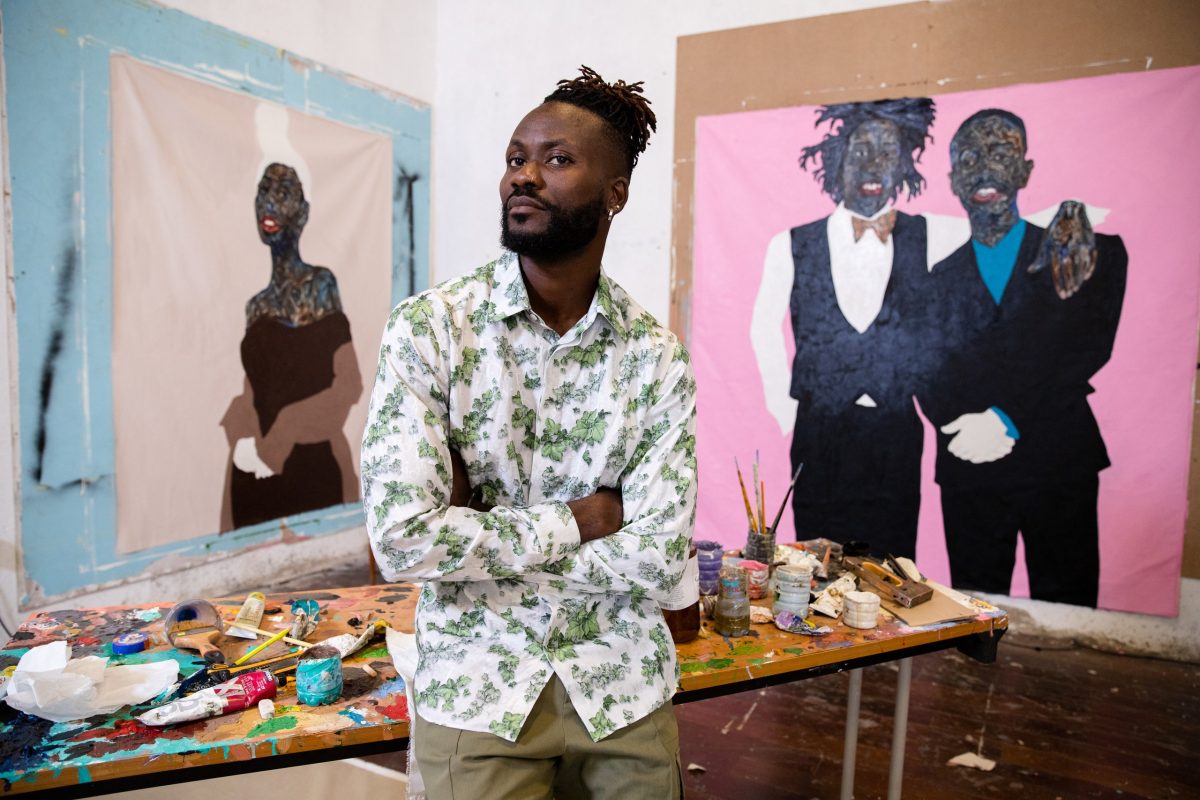News trend
Meet the Ghanaian Painter Behind Kim Jones’s Latest Dior Men Collection
Since taking on the mantle of creative director at Dior Men in 2018, Kim Jones has used his impressive knack for well-judged artist collaborations to bring a maverick spirit to the runway. Whether it was the colossal floral sculpture crafted by street artist Kaws as an ode to Monsieur Dior himself for his first collection, or the 39-foot-tall cyborg conjured up by Japanese artist Hajime Sorayama for his pre-fall show in Tokyo later that year—or, indeed, the postapocalyptic wasteland designed by Daniel Arsham last June—Jones’s willingness to hand over the reins to artists he admires has resulted in some of the most ambitious menswear spectacles ever staged.
What to do, then, when the eye-popping extravagance of seasons past must be scaled back for an intimate digital show in the middle of a pandemic? The answer, according to Jones, is to work with an artist of appropriate subtlety and nuance—someone to speak in perfect consonance with these strange and unlikely circumstances.

Along came Amoako Boafo, a Ghanaian artist Jones first encountered while showing his pre-fall collection during Art Basel in Miami, where Boafo was working as artist-in-residence at the Rubell Museum. After being introduced by Mera Rubell herself, Jones traveled to Boafo’s studio in Accra, Ghana, where the pair began discussing how to translate the striking characters that populate his paintings into clothing. “My experience collaborating on the Dior collection has been mind-blowing,” says Boafo. “But in many ways, the fashion and art worlds are similar. They convey genuine messages about being, and self-worth, much of which aligns with why I create—to elevate individuals and to define oneself.”
Boafo’s paintings riff on the formal conventions of Old Master portraits while injecting them with vibrant colors and textural brushstrokes—sometimes even applied by finger directly to the canvas—bringing his subjects to rippling, vivid life. They may echo the totems of Western art Boafo immersed himself in living in Vienna as an art student (and also carry a whisper of Egon Schiele’s fleshy carnality), but, most importantly, they integrate Black diasporic figures into the portrait types once reserved for princes and popes. “I celebrate subjects bound to my world,” Boafo continues. “I’m inspired by powerful Black emerging designers, creatives, curators, artists, and musicians. Some subjects remain anonymous, some are revealed subtly through the title of the works, and some titles name the person I am representing.”

Within the Dior collection, these characters were found embroidered across sweaters, their carefully painted floral surroundings printed onto shirts. Most powerful, however, was their less literal appearance in the accompanying film directed by Jackie Nickerson, in which models danced and their shadows intertwined across a series of colorful backdrops, the florals and jacquards becoming an appropriately opulent backdrop for Jones’s new muses. “As for representing solidarity and individuality, I believe those traits have never been more crucial than now during a time of crisis, amidst the pandemic,” Boafo concludes. “In times of crisis, notions shift, and our role as artists must shift as well.” And, if Jones is to be believed, so must fashion.

